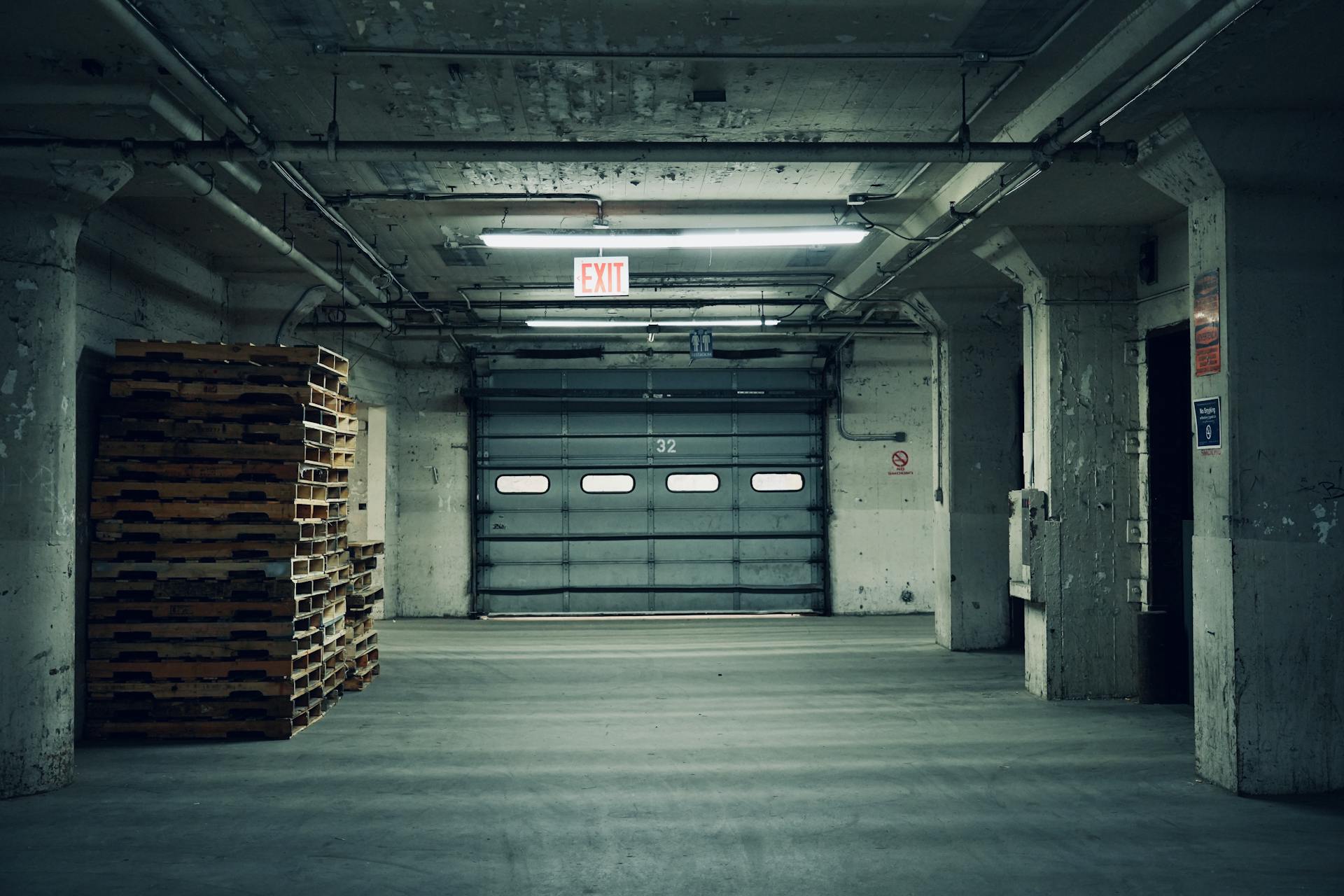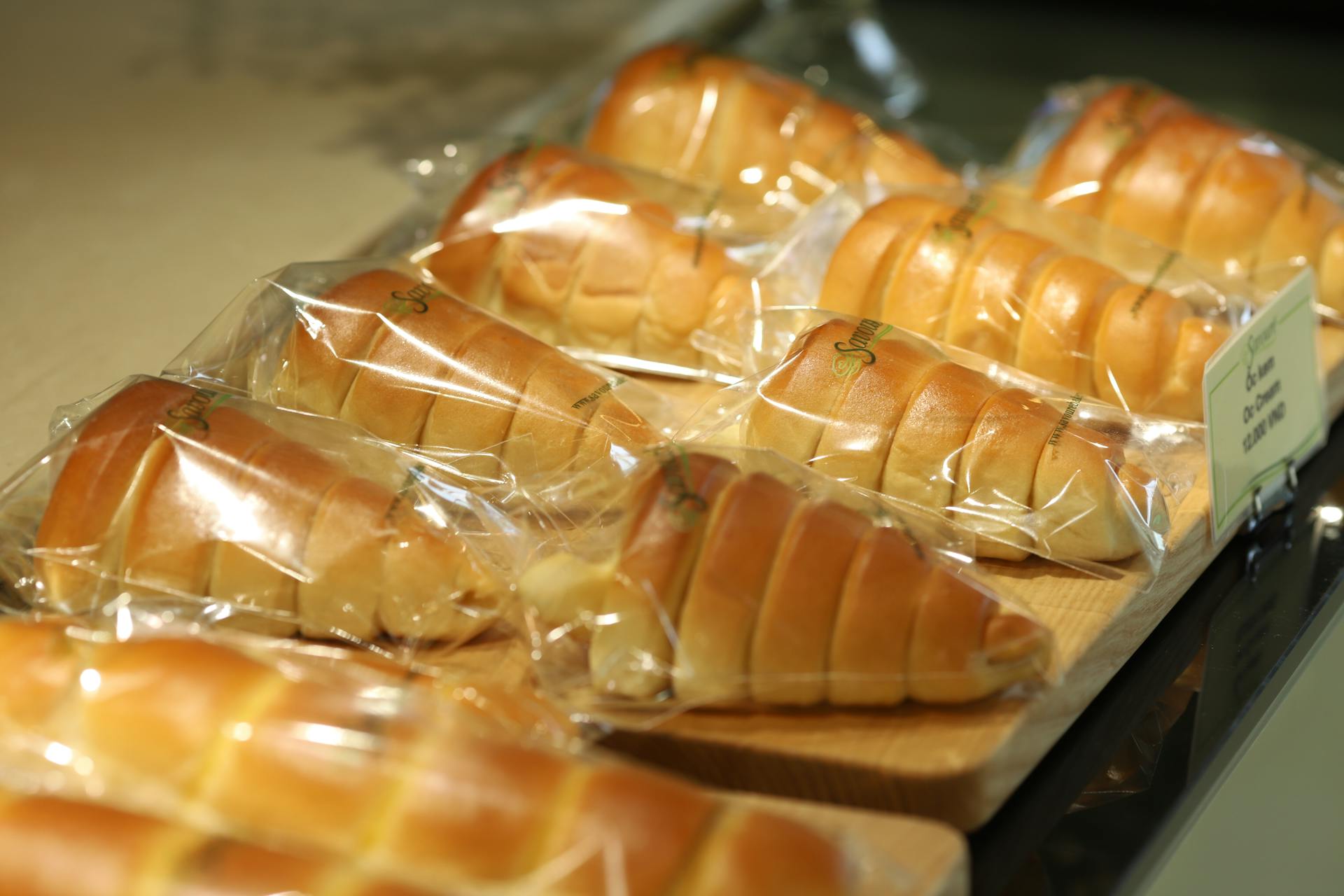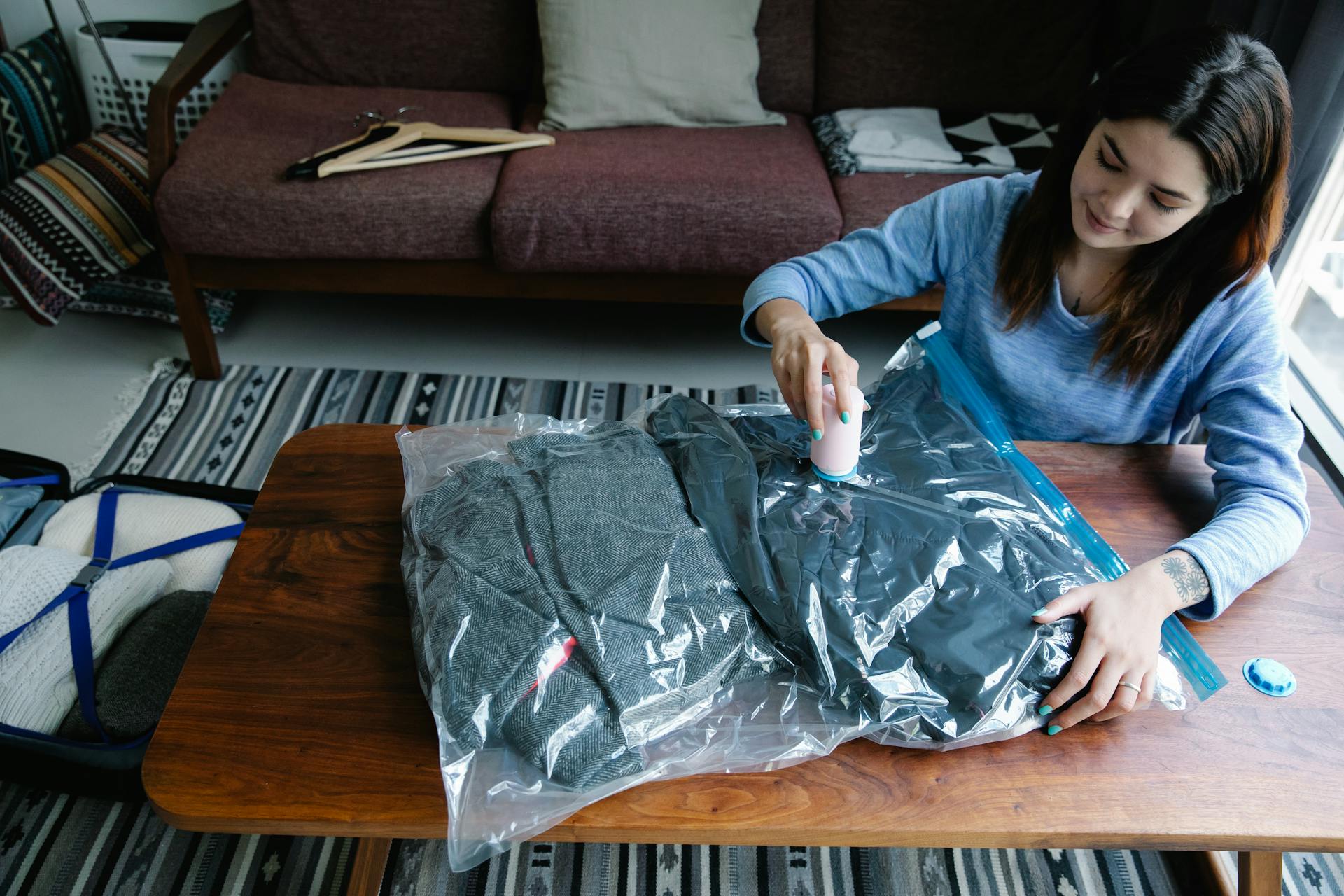
Food vacuum packaging is a game-changer for food storage and preservation. By removing air from a container, you can extend the shelf life of perishable foods and keep them fresh for longer.
The process of vacuum packaging involves using a machine to remove the air from a container, creating a vacuum seal that prevents air, moisture, and contaminants from entering. This is especially useful for foods that are sensitive to oxygen, such as meats and cheeses.
A standard vacuum packaging machine can remove up to 99.9% of the air in a container, making it an ideal solution for food storage.
Types of Vacuum Packaging Machines
There are several types of vacuum packaging machines, each with its own unique features and benefits. One type is the rotary belt vacuum packaging machine, which is more convenient than double-chamber vacuum packaging machines because it automatically rotates the belt while sealing the bags.
These machines are perfect for packaging fresh meat, processed meat, seafood, pickles, cheese, candy, and chocolate, as well as other products that require vacuum sealing.
Discover more: Semi-automatic Bag in Box Filling Machines

In large production facilities, thermoforming HFFS vacuum packaging machines are used to form packages from rolls of packaging film. These machines can greatly increase packaging production speed and are commonly used for products that require a high-strength barrier.
A key benefit of thermoforming is that it allows for customization of the packaging film size, color, clarity, and shape to fit products perfectly.
You can also use vacuum sealers at home to keep your food fresh and reduce waste. There are two main types of home vacuum sealers: those that use single-use plastic bags and reusable vacuum boxes made of glass.
Single-Chamber
Single-Chamber vacuum sealers require the entire product to be placed within the machine. This style of vacuum machine is also capable of sealing liquids due to equal pressure in the chamber and the bag eliminating the risk of the liquid being sucked out of the open edge of the bag.
They typically use a plastic bag for packaging, which is sealed with a heat seal inside the chamber. This helps to remove any remaining air in the bag, ensuring a tight seal.
Single-chamber sealers are ideal for low-to-medium-volume packaging, making them a great option for home use. They're also relatively easy to use and maintain.
This style of vacuum machine is widely used by professionals for keeping food fresh, and is now available at an affordable price for home use.
Rotary Belt Type
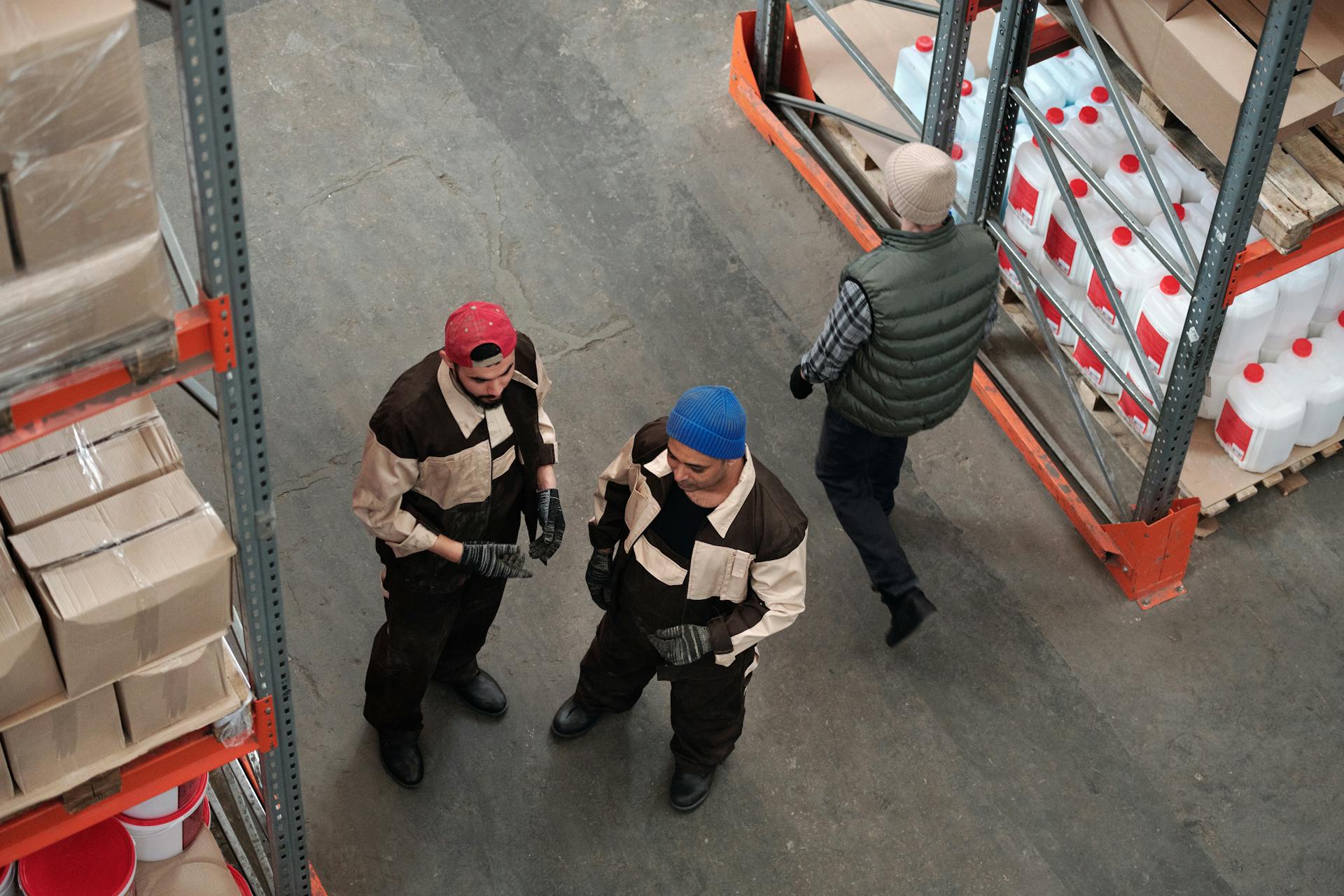
Rotary belt type vacuum sealers are a convenient option for vacuum packaging. They feature an automatic belt that rotates while the bags are placed to the sealing bar, making the process smoother.
These machines are perfect for packaging food with soup and liquid, thanks to their adjustable packaging plate that can be set to 4 degrees.
Rotary belt type vacuum sealers are suitable for a variety of products, including:
- Fresh meat
- Processed meat
- Seafood
- Pickles
- Cheese (hard and soft)
- Candy and chocolate
- Any other packs that needs vacuum sealing, and the size of the pack is not too big.
Thermoforming HFFS Machines
Thermoforming HFFS machines are a type of vacuum packaging machine that can form packages from rolls of packaging film.
These machines can greatly increase packaging production speed, making them ideal for large production facilities.
They work by forming the package from a roll of webbing, loading the product into the thermoformed pocket, and then sealing the top web under a vacuum or modified atmosphere.
Thermoformed plastics can be customized for size, color, clarity, and shape to fit products perfectly.
One of the most commonly used thermoformed plastics is PET, known for its high-strength barrier and ease of molding into designated designs and shapes.
This makes PET a popular choice for vacuum packaging applications.
What Is
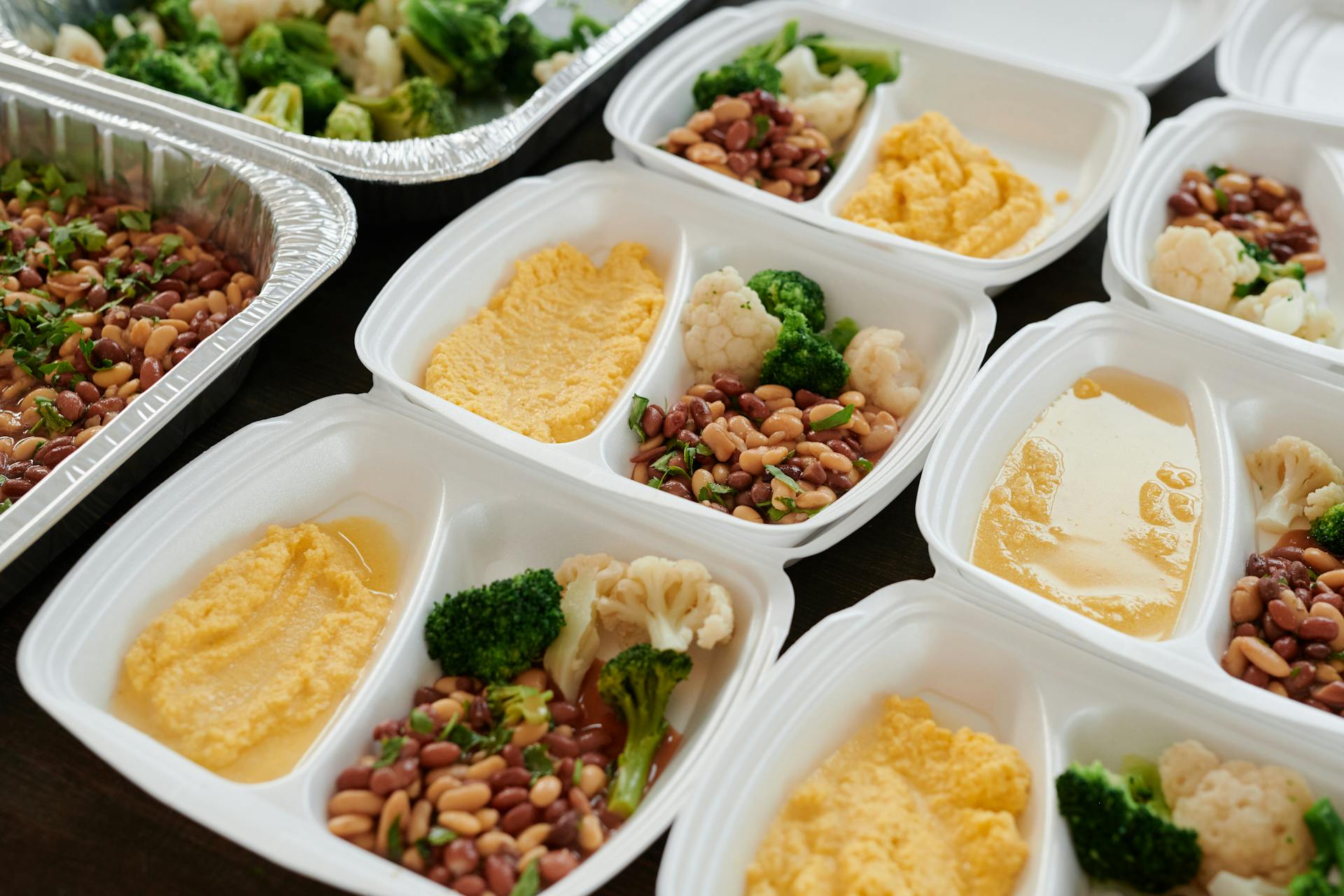
Vacuum packaging machines use a vacuum pump to remove air from a package, creating airtight seals that preserve freshness and prevent spoilage. This is particularly useful for packaging food products that are sensitive to air, moisture, or other environmental factors.
Vacuum packaging machines can be classified into different types based on their operation and application. These include Modified Atmosphere Packaging (MAP) machines, which control the gas composition inside the package to extend shelf life, and Gas Flush Packaging machines, which use a gas mixture to displace oxygen and prevent spoilage.
Modified Atmosphere Packaging (MAP) machines are commonly used in the food industry to package meat, poultry, and seafood products. By removing oxygen and replacing it with a gas mixture, MAP machines can significantly extend the shelf life of these products.
Gas Flush Packaging machines, on the other hand, are used to package dry goods such as coffee, nuts, and spices. These machines use a gas mixture to displace oxygen and prevent spoilage, while also maintaining the freshness and aroma of the packaged product.
Vacuum packaging machines can be further classified into different types based on their operating mechanism. These include chamber vacuum machines, which use a sealed chamber to remove air from the package, and tray vacuum machines, which use a tray to package and vacuum-seal products.
Benefits and Advantages
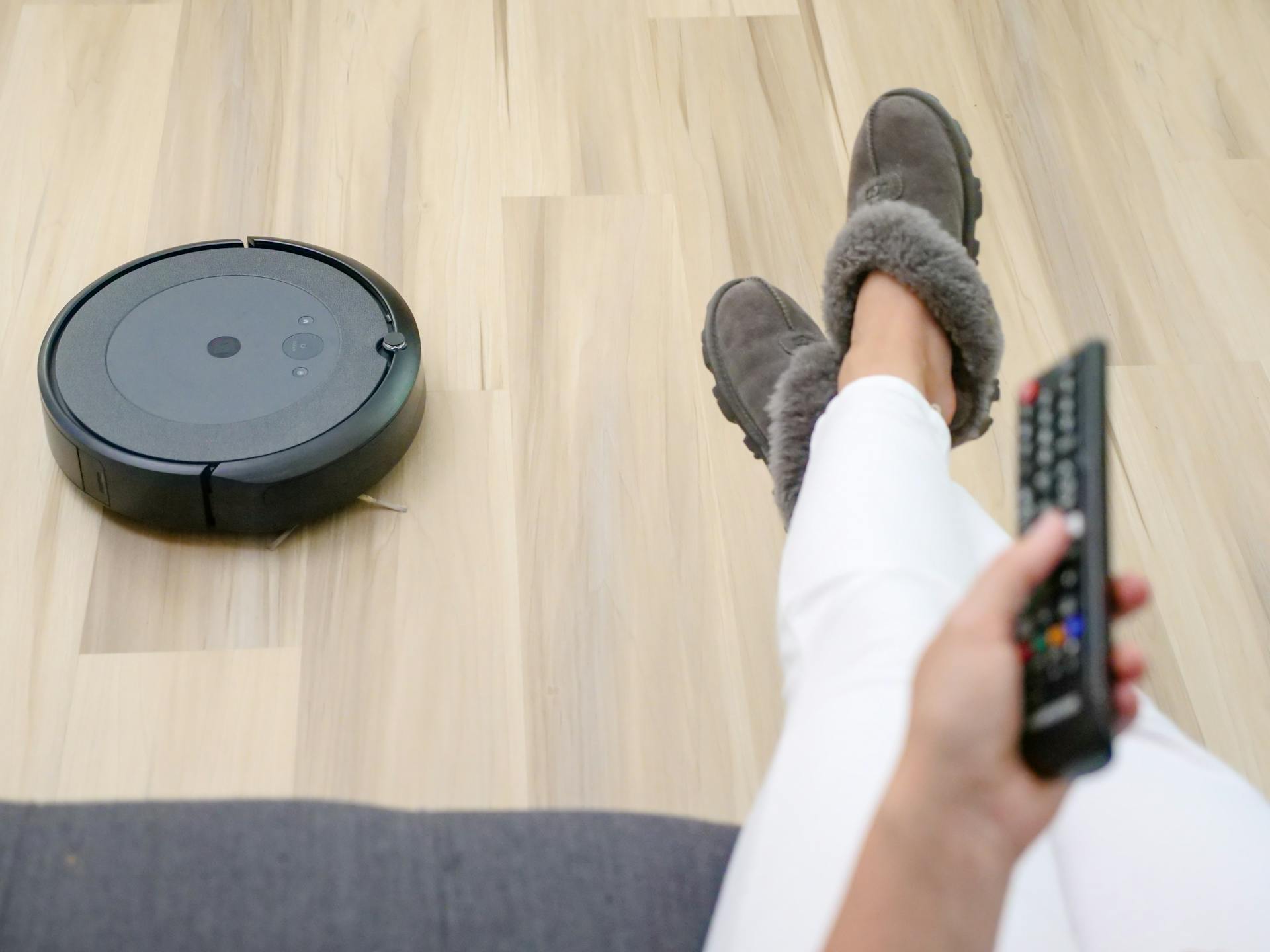
Food vacuum packaging offers numerous benefits and advantages that make it a game-changer for food storage. By removing air from the packaging, you can extend the shelf life of your food up to 5 times longer than traditional conditions.
One of the biggest advantages of vacuum packaging is its ability to preserve the quality of food. This means that your food will retain its taste, texture, and nutritional qualities for a longer period. Vacuum packaging is particularly effective in reducing the risks of contamination and preserving the nutritive qualities during storage.
Here are some of the key benefits of vacuum packaging:
- Massively reduces the risks of contamination by depriving aerobic microorganisms of oxygen
- Preserves the nutritive qualities during storage by preventing oxidation
- Does not alter the texture or taste of the food, unlike heat treatment
In addition to these benefits, vacuum packaging also offers space-saving and organizational benefits. Vacuum-sealed bags take up less room than containers, allowing you to optimize your storage space. This is especially useful for those with limited freezer space.
Vacuum sealers can also help you organize your freezer by making it easy to find and rotate stored items. This can help reduce food waste and save you time and money.
Food Safety and Preservation
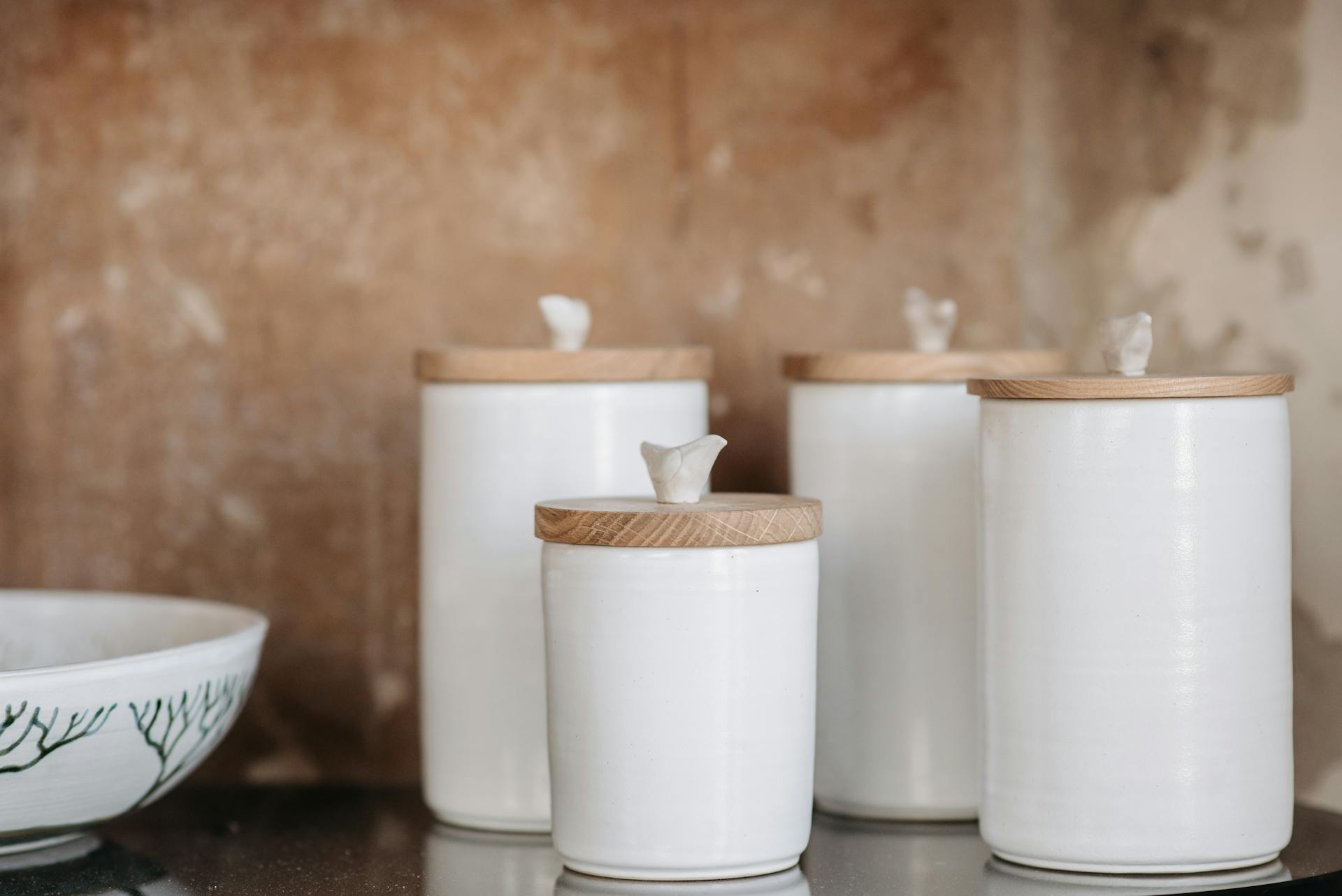
Food safety is a top concern when it comes to food storage. Anaerobic bacteria can proliferate in oxygen-depleted environments, potentially causing food-safety issues.
Some pathogens of concern in vacuum-packed foods are spore-forming non-proteolytic Clostridium botulinum, Yersinia enterocolitica, and Listeria monocytogenes. These bacteria can be inhibited by using vacuum packing in combination with other food processing techniques, such as retorting or refrigeration.
Vacuum sealing can extend the shelf life of many foods, including meats, by preventing oxidation and spoilage. This makes it an excellent tool for preserving perishable items.
Here's a quick rundown of some common foods and their shelf life when vacuum-sealed:
By removing air from the packaging, vacuum sealers can prevent freezer burn and preserve the nutritional value of food. This is especially important for foods that spoil quickly, such as fish and vegetables.
Safety
Vacuum packing can prevent the growth of anaerobic bacteria in an oxygen-depleted environment, which can cause food-safety issues.

Some pathogens of concern in vacuum-packed foods are spore-forming non-proteolytic Clostridium botulinum, Yersinia enterocolitica, and Listeria monocytogenes.
Removing all the air from the bag prevents bacteria growth, protecting foods from contamination and spoilage.
Vacuum sealing can inhibit the growth of mold, fungi, and bacteria, extending the shelf life of food.
This is especially important for foods that are prone to spoilage, like meats and dairy products.
By removing oxygen and preventing bacteria growth, vacuum sealing can keep food safe and fresh for a longer period.
Shelf Life
Vacuum sealers can extend the shelf life of many foods, depending on the product, atmosphere, temperature, and the barrier properties of the package.
Food stored in vacuum-sealed bags can last 3-5 times longer than food stored in traditional containers, significantly reducing food waste and saving money in the long run.
The shelf life of meats can be extended by vacuum packaging, particularly when used with modified atmosphere packaging.

Dry goods, such as bread, can last upwards of a year when vacuum-sealed and stored in your pantry.
Vacuum-sealing food can extend your foods' typical shelf life by inhibiting the growth of mold, fungi, and bacteria.
- Meats can last 2-3 years when vacuum-sealed and frozen.
- Dry goods, such as bread, can last up to a year when vacuum-sealed and stored in the pantry.
Cooking
Cooking vacuum-sealed food is a game-changer for meal prep and reducing food waste. You can use vacuum sealing to create pre-portioned meals that cut down on food waste and are easy to prepare.
Sous vide is one of the best methods for cooking vacuum-sealed food, allowing for precise temperature control and even cooking. It's perfect for cooking delicate fish or eggs to the perfect doneness.
Boiling is another great method for cooking vacuum-sealed food, especially for vegetables and pasta. Simply submerge the sealed package in boiling water and cook for the recommended time.
Microwaving is also a convenient option for reheating vacuum-sealed food, especially for leftovers. Just be sure to follow the recommended cooking time and power level to avoid overcooking.
Sealing and Packaging Methods
You can seal food items using a vacuum sealer, which preserves and stores food ranging from produce to full entrees.
The vacuum sealing process is simple and efficient, regardless of the type of vacuum sealer you own. You can follow these steps to learn how to vacuum seal: Select a suitable vacuum sealer bag for your machine.Place the food in the bag, leaving at least 2" of space between the item and the top of the pouch for a chamber vacuum sealer and at least 3" for an external machine.Align the open end of the bag with the seal bar on your vacuum sealer. Ensure the pouch lies flat across the seal bar and contains no wrinkles.Close the lid of your vacuum sealer tightly. For manual machines, press the "Start" button to begin the sealing process. For automatic machines, press down firmly on the lid until the vacuum cycle begins.Once all the air is removed, the seal bar fuses the bag to create an airtight seal. Wait until the machine indicates the process is finished before removing and storing your vacuum-sealed food.
There are different types of vacuum sealers available, including chamber vacuum sealers, which are ideal for sealing liquids and are typically used in commercial settings. Chamber vacuum sealers have a higher upfront cost, but provide greater versatility and are better suited for high-volume commercial applications.
Edge, Suction, External

Edge, suction, and external vacuum sealers are a popular choice for sealing dry goods, and they work by attaching a bag to the vacuum-sealing machine externally.
These units typically use a dry piston vacuum pump, which is often considered maintenance-free.
Double-Chamber
Double-chamber vacuum sealers are a type of packaging machine that can be used for medium-volume packaging.
They require the entire product to be placed in a plastic bag within the machine, which is then sealed and refilled with air to remove any remaining air in the bag.
This process makes double-chamber sealers particularly useful for vacuum sealing liquids.
The lid of a double-chamber vacuum packaging machine typically swings from one side to another, increasing production speed over a single-chamber model.
Double-chamber vacuum packaging machines can have either spring-weighted lids or fully automatic lids.
They are commonly used for tasks such as rotary belt type packaging machines are not mentioned as being commonly used for, but instead, double-chamber vacuum packaging machines are used for tasks that were not specified in the original text.
Goods Sealed for Shipping
Vacuum sealing is a great solution for keeping foods fresh during shipping, especially for long-distance journeys. It prevents maceration due to changes in temperature and humidity, which is the primary cause of waste during container shipping of fruit and vegetables.
Food products are often shipped thousands of kilometers from their place of production, and maintaining the cold chain is crucial to prevent food poisoning and destruction of the batches. Vacuum sealed bags can limit losses for foods travelling long distances in containers at room temperature.
Double-chamber vacuum sealers are commonly used for medium-volume packaging and have the capability to vacuum seal liquids. They are typically used for products that need to be sealed in a plastic bag within the machine.
High barrier-chamber vacuum shrink bags are made with multiple layers that prevent oxygen permeability, enhancing shelf life protection. They are made with materials such as polyvinylidene chloride (PVDC) and ethylene vinyl alcohol (EVOH), which allow minimal oxygen to pass through.
You might like: Bulk Kraft Paper Bags
Chamber vacuum sealers are ideal for establishments that frequently seal food and liquids in large batches. They allow users to place food in the vacuum sealer bag inside the unit's chamber, where the air is pumped out for an airtight seal.
Some chamber vacuum sealers have a gas flush feature to protect delicate food, and are available in countertop and floor models. They are also able to vacuum seal multiple bags at once, making them a great option for high-volume commercial applications.
How to Seal
To seal your food properly, you need to select the right vacuum sealer bag for your machine. Make sure to choose a bag that's suitable for your vacuum sealer's size and type.
When sealing liquids, use a chamber vacuum sealing machine, as it can package almost any item, including liquids and wet foods, without extra attachments. External machines are not ideal for sealing liquid-rich foods.
Double-chamber vacuum sealers are great for medium-volume packaging and can even vacuum seal liquids. They typically have a lid that swings from one side to another, increasing production speed.

Here are some key differences between vacuum sealers and freezer bags:
To seal food properly, it's essential to follow the manufacturer's instructions for your specific vacuum sealer model. Some vacuum sealers have different settings for moisture levels, so make sure to choose the right setting for your food.
It's also crucial to ensure your workspace and tools are clean and sanitized before and during the sealing process. This will help maintain food safety and hygiene.
Not to Seal
Mushrooms, garlic, and soft and unpasteurized cheeses like brie and ricotta are best avoided when it comes to vacuum sealing.
These products might contain anaerobic bacteria that can grow and thrive in the oxygen-free environment inside a vacuum pouch.
Fresh cruciferous vegetables like broccoli, cauliflower, cabbage, Brussels sprouts, and turnips emit gases when stored, causing the airtight bag to expand over time.
Blanching these vegetables before vacuum sealing can prevent this issue by halting enzyme production and eliminating the risk of unwanted gases.
Fresh foods should be cooled to at least room temperature before sealing to prevent bacterial growth, as higher temperatures are more likely to harbor bacteria.
Can You Microwave Sealed Bags?
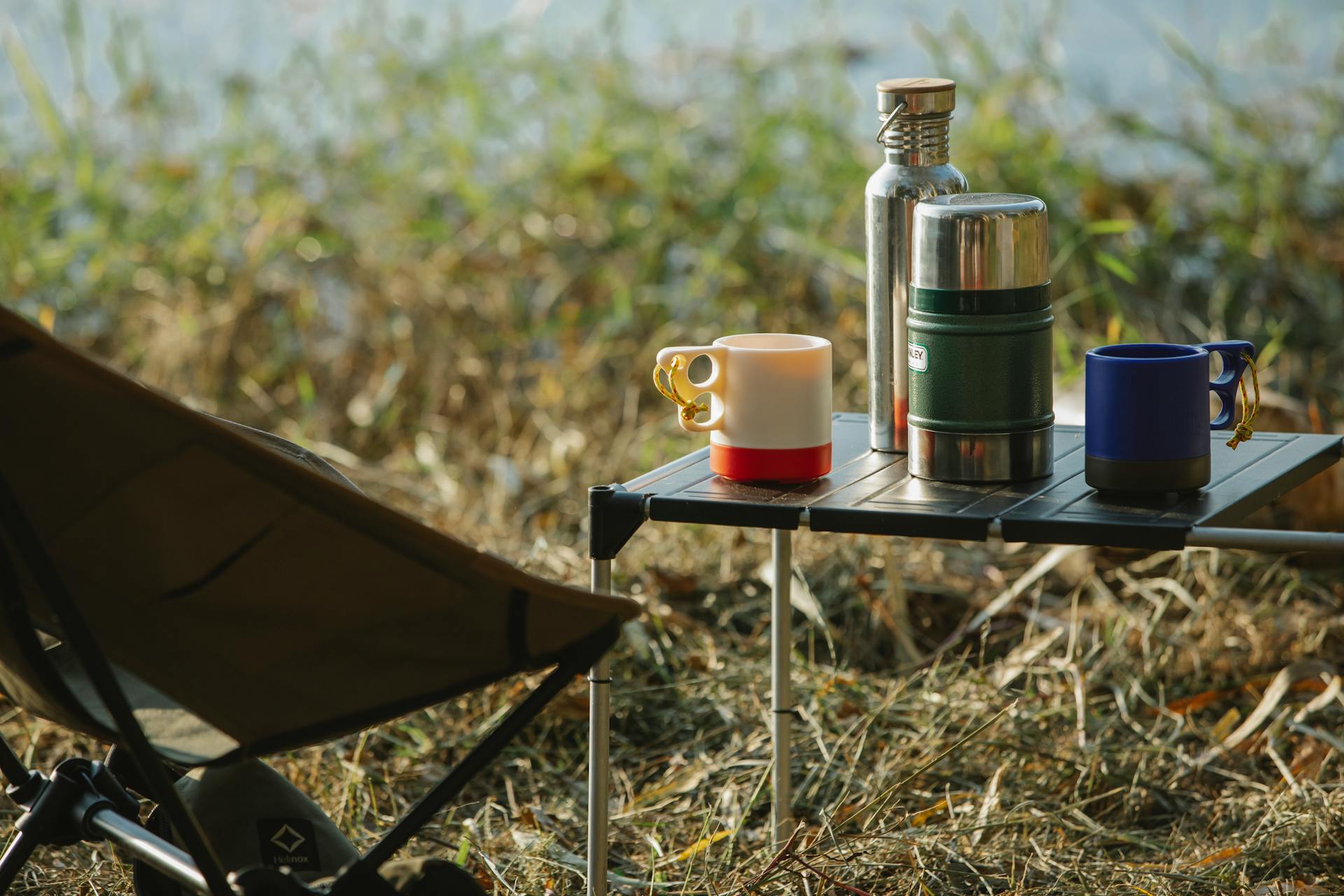
Microwaving sealed bags can be a convenient way to reheat food, but it's essential to choose the right type of bag. Choose microwave-safe vacuum packaging bags to package your foods.
If you're reheating vacuum-sealed foods, it's perfect for any food sealed without much extra oil in the bag. Cutting a hole in the corner of the bag allows steam to escape while reheating.
You can safely microwave sealed bags, but only if they're specifically designed for microwave use.
Filler Plates
Filler plates are a great way to reduce the overall time needed to seal a bag.
Using a filler plate can save you time, as it reduces the necessary effort to vacuum the space. This is because there is less air in the chamber, making the sealing process faster.
Filler plates are easy to use and can be placed into a chamber vacuum sealer before beginning the sealing process.
They help the pump's longevity by reducing the necessary effort to vacuum the space.
Comparison and Options
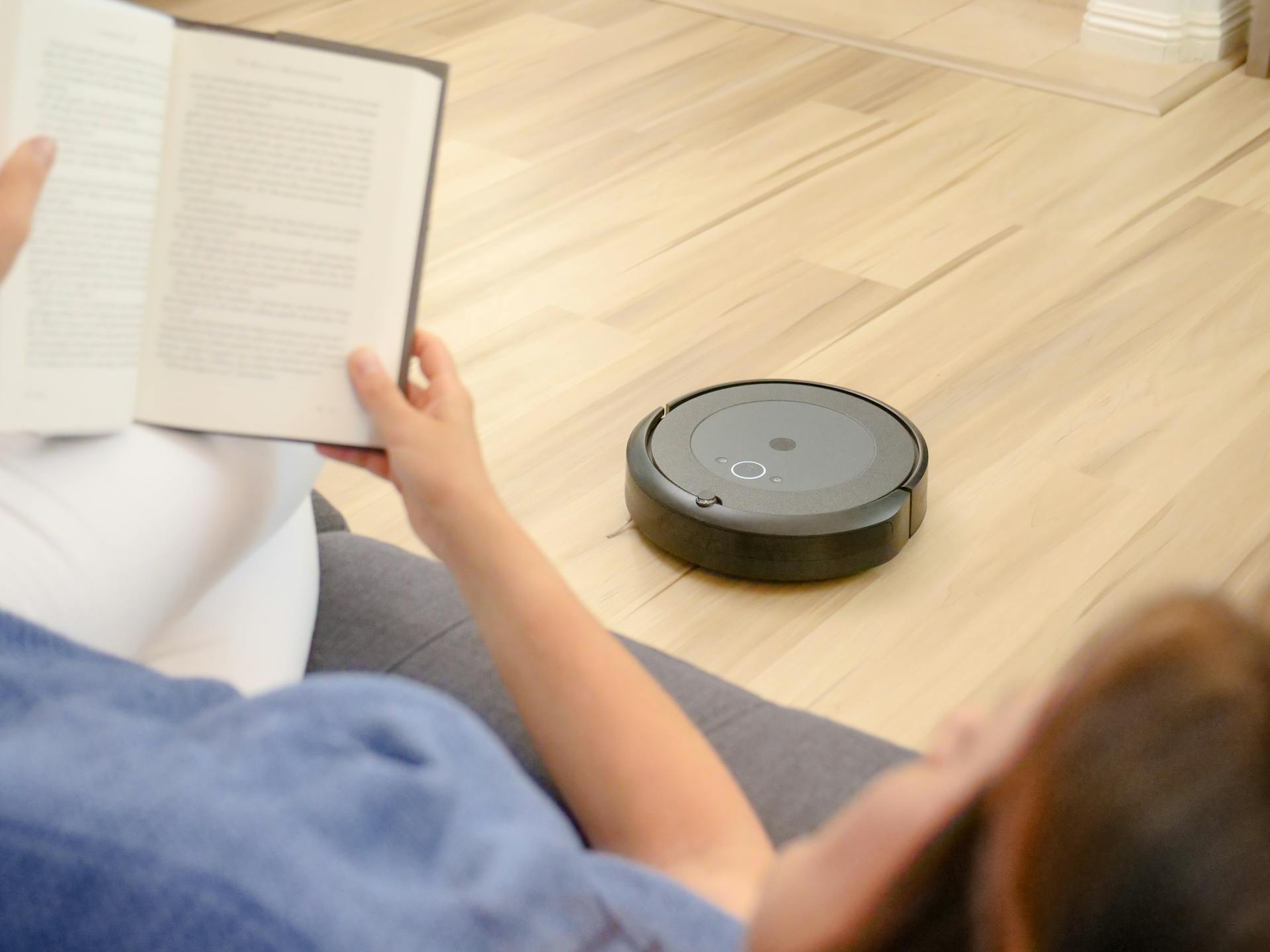
Food vacuum packaging offers several advantages over traditional storage methods. Vacuum sealers can remove air from packaging, reducing the risk of freezer burn and spoilage.
Food stored in vacuum-sealed bags can last 3-5 times longer than food stored in freezer bags. This extended shelf life is a significant benefit for households and food businesses alike.
For shipping food products, vacuum packaging is a game-changer. It can limit losses for foods traveling long distances in containers at room temperature, reducing waste caused by temperature and humidity changes.
Here are some key differences between vacuum sealers and freezer bags:
- Vacuum sealers remove air, while freezer bags do not.
- Vacuum sealers can store liquids, while freezer bags cannot.
- Vacuum sealers offer a 3-5 times longer shelf life than freezer bags.
Cost-Effectiveness of Sealing
Investing in a vacuum sealer can save you money over time by reducing food waste and making the most of your grocery budget. This is because you can make the most of your grocery budget by reducing food waste.
One-third of the food produced in the world is wasted, which means there's a lot of potential for savings. By reducing food waste, you can make the most of your grocery budget and save money in the long run.

Vacuum-sealed foods can last longer, meaning fewer trips to the grocery store and less money spent on groceries. This is a cost-effective solution for food storage.
While there's an upfront cost to investing in a vacuum sealer, the savings from less food spoilage can offset this. The cost-effectiveness of vacuum sealing can be a game-changer for your grocery budget.
Manual vs Automatic
Manual vacuum sealers offer flexibility with a timer, allowing you to adjust the air-pulling time for delicate items.
This feature is particularly helpful for packaging soft, delicate items, as you can set the desired time and avoid having to hold down the pulse button every time.
Automatic sealers, on the other hand, run the vacuum cycle until all air is pulled from the bag, making it a faster option.
This is generally more efficient for packaging more durable items.
Combination manual and automatic machines offer both choices, giving you the flexibility to choose the best option for your needs.
Bags for Freezing vs. Comparison

Freezer bags are a common choice for storing food, but they have some limitations. Food stored in freezer bags can last 3-5 times longer when compared to vacuum-sealed bags is not true, rather vacuum sealers remove air from the packaging, reducing the risk of freezer burn and spoilage.
Vacuum sealers offer a significant advantage over freezer bags in terms of food preservation. They can remove air from the packaging, reducing the risk of freezer burn and spoilage. This results in food that lasts longer.
Vacuum sealers can also be used for a variety of foods, including liquids, unlike freezer bags. This makes them a more versatile option for food storage.
Here's a comparison of freezer bags and vacuum sealers:
Home Packaging
You can get a good vacuum sealer for under $50, but be aware that cheaper models may not have settings for different moisture levels and may not last long.
A low-cost vacuum sealer made of plastic is a good starting point, but it's essential to consider the quality and potential limitations. My initial plastic model cost $35, but it lasted less than 2 years and couldn't handle any amount of moisture.
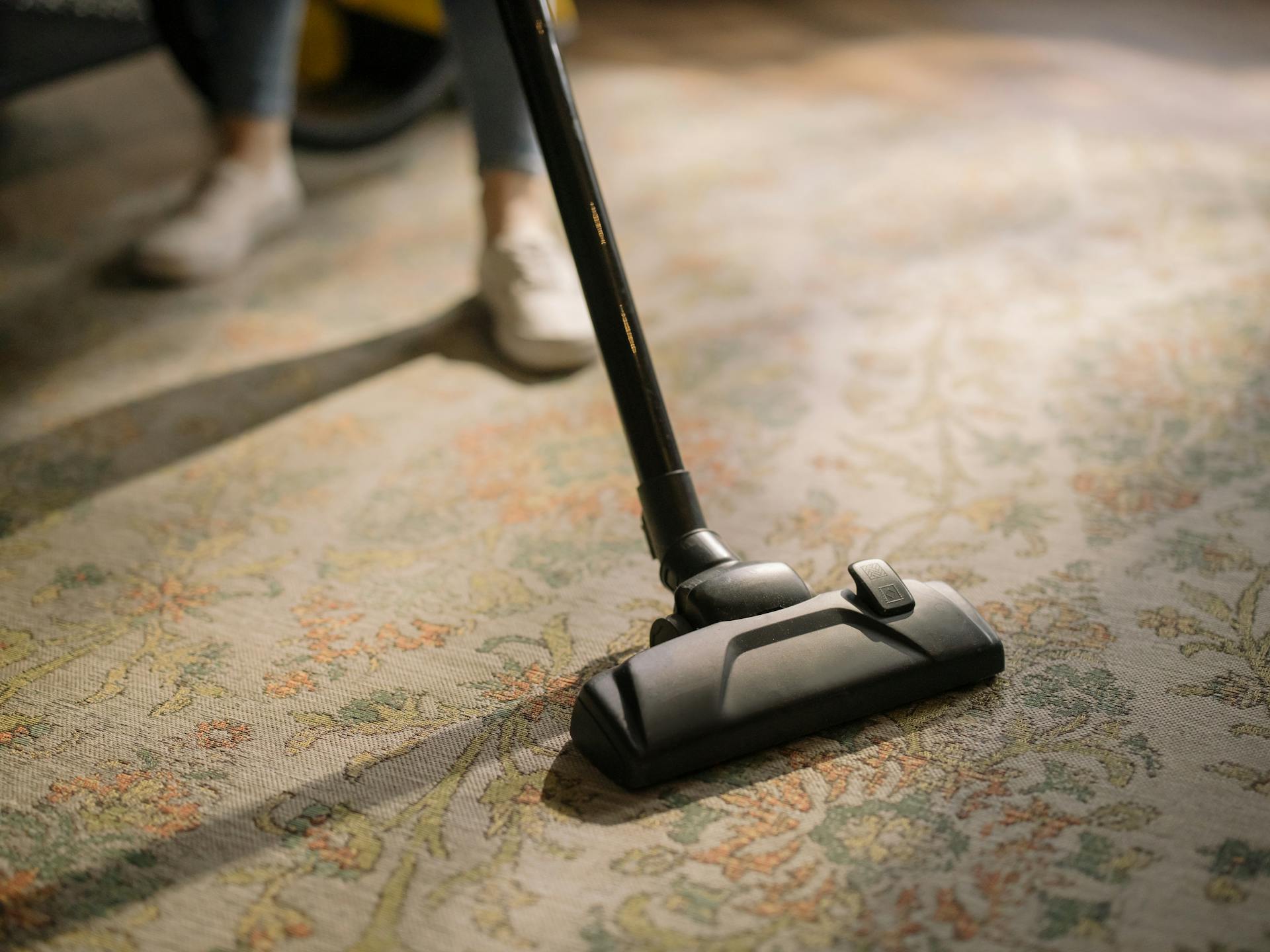
Before vacuum sealing, make sure your workspace and tools are clean and sanitized to ensure food safety and hygiene. Wear a clean apron and wash your hands thoroughly before starting.
To seal your food effectively, you'll need a vacuum sealer, vacuum seal bag roll, permanent marker, kitchen scale, bag holder, and scissors. If your vacuum sealer doesn't have an attached cutter, you'll need to use scissors to cut the bags manually.
It's crucial to label and date your sealed food items properly, especially if you're storing them in the freezer. This will help you keep track of what you have and how long it's been stored.
Some foods, like mushrooms, garlic, and soft cheeses, shouldn't be vacuum sealed because they can harbor anaerobic bacteria. Fresh cruciferous vegetables, like broccoli and cauliflower, should also be blanched before sealing to prevent gasses from building up.
Accessories
Vacuum sealer accessories can make a big difference in the efficiency and convenience of using a vacuum sealer machine.

Besides vacuum packaging bags, there are other essential accessories you can use to streamline the process.
Vacuum sealer machines can help save you money by reducing food waste, and accessories like vacuum sealer bags can increase the versatility and productivity of your machine.
Vacuum sealer bags are a must-have for vacuum-sealing food, and using them correctly can help preserve the freshness and quality of your food.
You can also use other vacuum sealer accessories like vacuum sealer rolls or pre-cut bags to make the process even easier and more convenient.
Frequently Asked Questions
What are the negatives of vacuum packing food?
Vacuum packing food can increase costs due to specialized bags or containers, and also pose health risks if not handled or stored properly
Is vacuum sealing food a good idea?
Vacuum sealing food extends its shelf life and preserves flavors and nutrients, making it a great option for kitchen storage. It's a simple yet effective way to keep your food fresh for longer.
Sources
- https://en.wikipedia.org/wiki/Vacuum_packing
- https://www.alcimed.com/en/insights/vacuum-packaging-food-advantages/
- https://extension.umaine.edu/food-health/2024/09/03/vacuum-sealing/
- https://www.equippers.com/food-prep-smallwares/food-storage/food-packaging-machines
- https://www.webstaurantstore.com/guide/612/vacuum-sealer-buying-guide.html
Featured Images: pexels.com

